Harmonic Analysis (RMA) Worksheet for the song: "Happy Together".
Harmonic Analysis (RMA) Worksheet for the song: Happy Together.
Happy Together is a song written by Garry Bonner and Alan Gordon and recorded by American rock band the Turtles. It was released as a single, b/w "Like the Seasons", in January 1967, and peaked at number one on the US Billboard Hot 100, becoming the band's first and only chart-topper there. The song also reached the top 20 in diverse countries, including number 2 in Canada and number 12 in the UK. It was later included on their third studio album, Happy Together (1967).
Bonner and Gordon composed the song while still members of The Magicians. The lyrics, despite the joyous sound of the music, express an unrequited, imagined love. They recorded a demo consisting of a simple arrangement of acoustic guitar and hand claps. The demo was offered to and rejected by a dozen artists, due to its primitive sound.
The Turtles, who had come from commercial and personal problems, found the demo and, thinking the song a potential hit, initially rehearsed it in live performances. They recorded their version in the Sunset Sound studio, with the newly-arrived bassist Chip Douglas arranging the horns and backing vocals. (wikiwand);
Here is a super close approximation of the Intro from the original recording transposed Frm F#m to Dm .

Introduction & Verse Accompaniment Riff/Lick/Figure.
Continue for Chords of the Verse:
Dm C Bb A
.

The Daily Ukulele— 365 Songs for Better Living book.








C Tuning, Low G

To Coda

This is the famous The Andalusian Chord Progression . A very common chord progression. The 1st and 2nd endings are harmonically the same.
D.S. al Coda

A Harmonic Analysis (RMA/HA) and its worksheet are intended to show the function of the chords, the harmonic principles used, the keys and tonalities the song explores. And, can be used for scale selections and chord and scale substitutions.
lead leadsheet.Minimal roadmap information such as repeats, fine, D.S., D.C., and codas has been used in preparing the worksheets to somewhat mirror the leadsheet in the Daily Ukulele book.
Yellow Book. You should start to recognize that 1st endings typically always return to a previous verse or an
 section. With a 2nd ending, a transition to a different part of the song, a
section. With a 2nd ending, a transition to a different part of the song, a  or chorus. Harmonic Principles are used for these repeats and transitions.
or chorus. Harmonic Principles are used for these repeats and transitions.- Happy Together is in 4/4, Common Time and the Key of C . Original Key: F♯/G♭ Tempo: 120 bpm.
- Full Diatonic – Aeolian
- Partial Diatonic • Full Diatonic includes Secondary Dominant chords
- Internal Modulation

All the chords are right out of D Aeolian/Natural Minor (D E F G A Bb C D'). The D Minor Pentatonic/Blues scale is also a good choice: D F G A C D').
Contemporary Scales: Minor Pent: Minor Pentatonic, Pent: Major Pentatonic, Blues,
Scale/Mode Names: Ion: Ionian (Major), Dor: Dorian (Minor), Phrygian: Phrygian, Lyd: Lydian, Mix: Mixolydian (Dominant), Aeol: Aeolian (Natural Minor), Loc: Locrian


Here is a super close approximation of the Intro from the original recording transposed from F#m to Dm .

Introduction & Verse Accompaniment Riff/Lick/Figure.
Continue for Chords of the Verse:
Dm C Bb A
.
C Tuning, Low G
- UKULELELesson Happy Together utilizes the The Andalusian Chord Progression for the Intro and Verses.
- (wikiwand) Happy Together
- Happy Together - The Turtles (1967) •
Related Lessons, Videos, Lesson Series, Songs, Books & Reference Charts, Resources & Assets, Workshops are below.

Harmonic Analysis (HA), also known as the study of chord relationships, is the method used to identify the harmonic role of chords within a chord progression or song. A chord progression refers to a sequence of chords, with each chord having a root note and belonging to a specific chord type. The function of a chord within a particular scale's tonality is determined by its relationship to that scale.
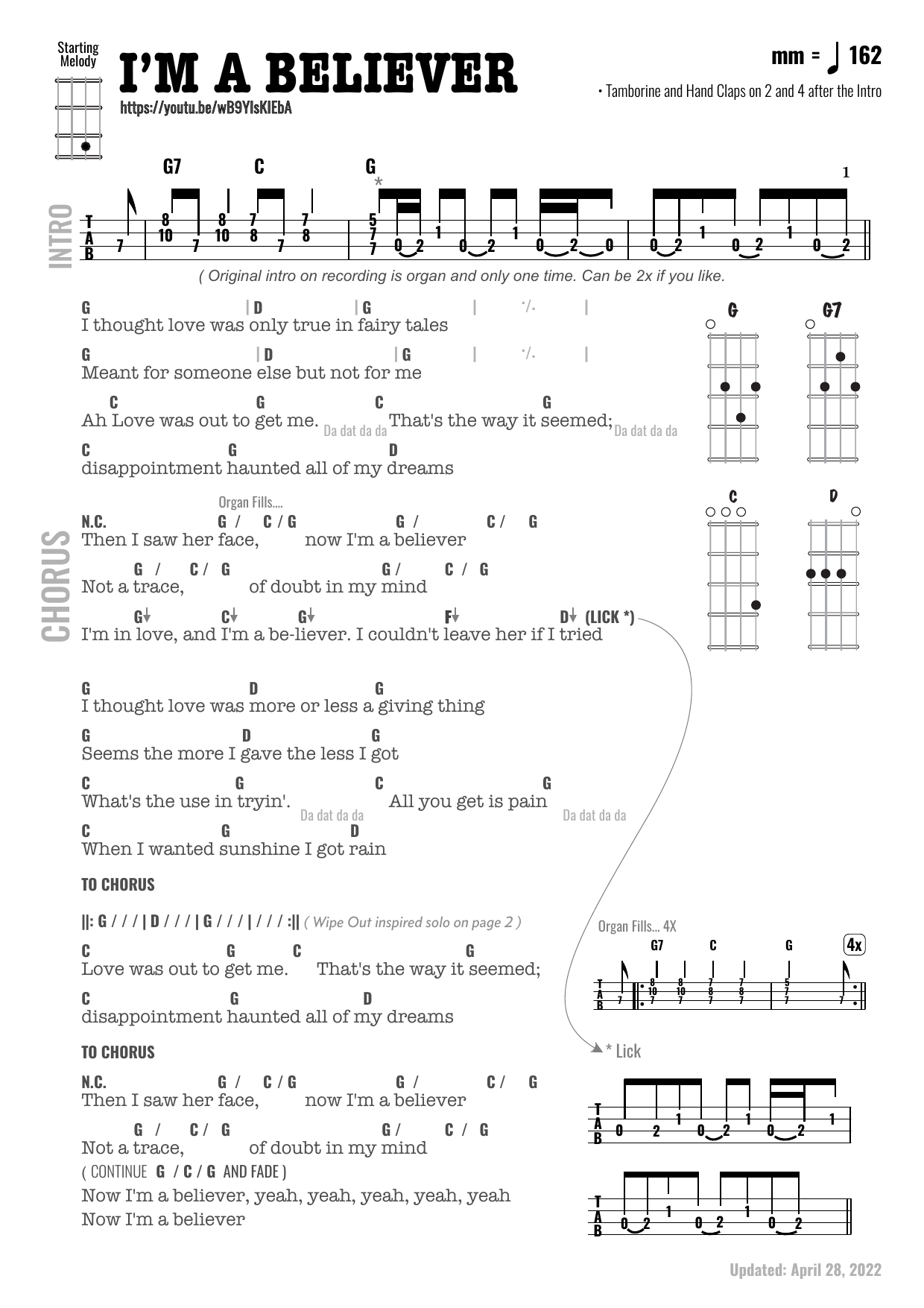
"I'm a Believer" is a song written by Neil Diamond and recorded by the Monkees in 1966 with the lead vocals by Micky Dolenz. The single, produced by Jeff Barry, hit the number-one spot on the U.S. Billboard Hot 100 chart for the week ending December 31, 1966, and remained there for seven weeks becoming the last No. 1 hit of 1966 and the biggest-selling single for all of 1967.
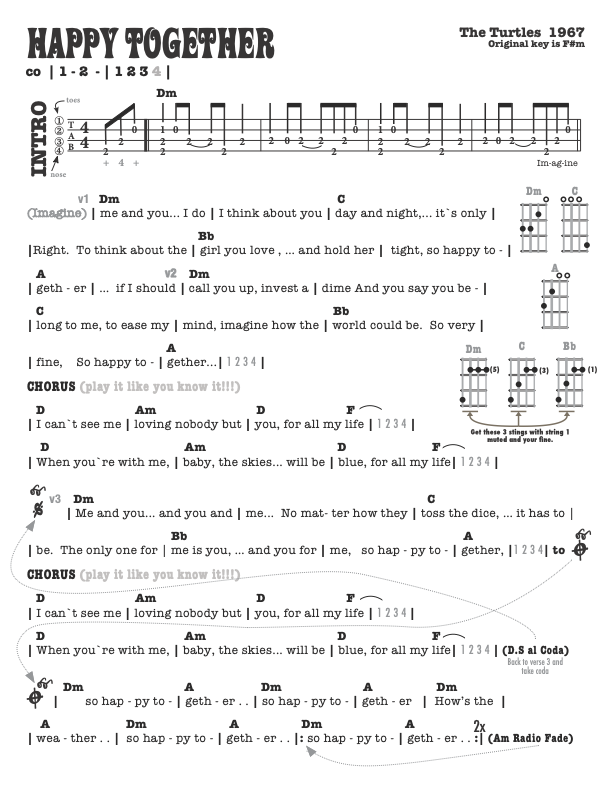
"Happy Together" is a song written by Garry Bonner and Alan Gordon and recorded by American rock band the Turtles. It was released as a single, b/w "Like the Seasons", in January 1967, and peaked at number one on the US Billboard Hot 100, becoming the band's first and only chart-topper there. The song also reached the top 20 in diverse countries, including number 2 in Canada and number 12 in the UK. It was later included on their third studio album, Happy Together (1967).

Harmonic Analysis is the understanding of the functional sequence of chords. It is the process used to analyze the harmonic structure of a progression, song or composition. This analysis is then used to make scale selections for improvisation and chord substitution.
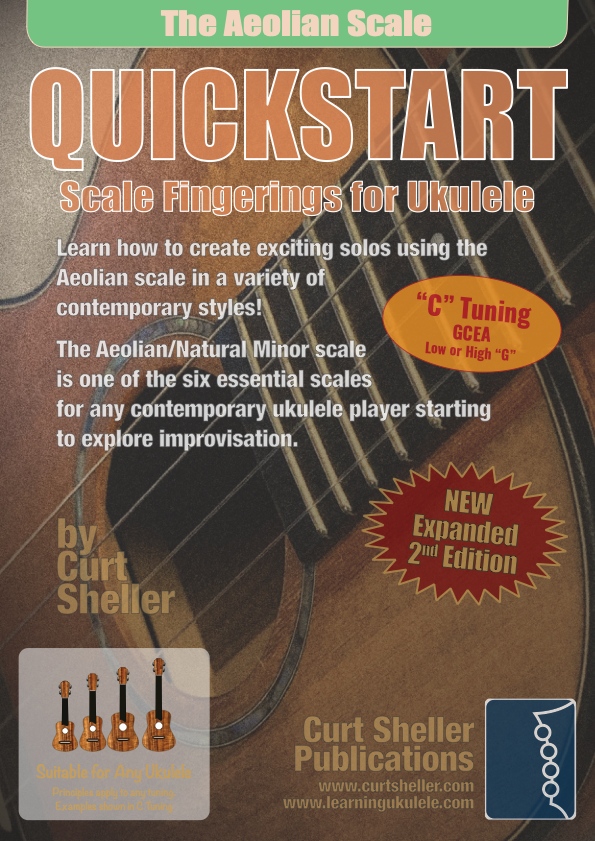
The Aeolian or Natural Minor is one of six essential scales for ALL ukulele players. One octave scale fingering solutions for strings four and three and any finger with the Aeolian scale chords are covered in all keys. Sample chord progressions for practice are included.
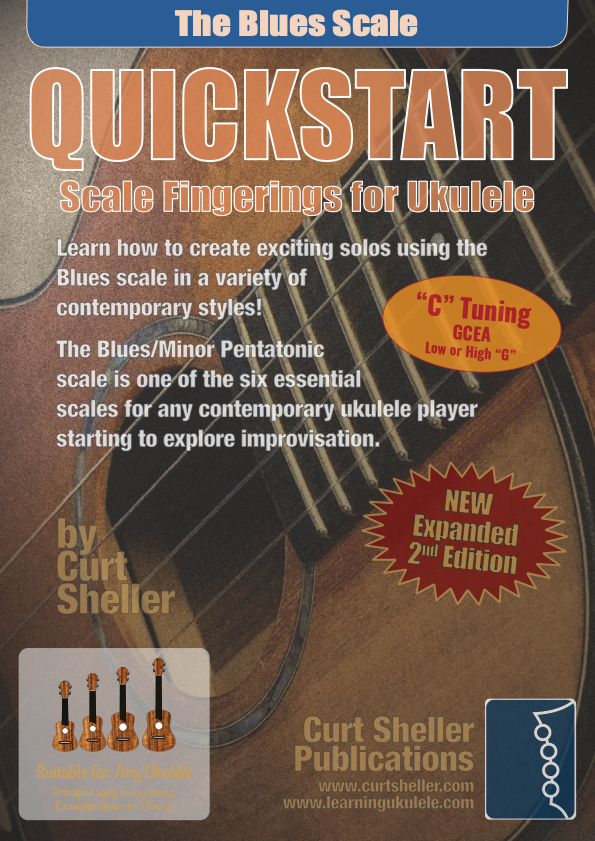
The Blues or Minor Pentatonic is one of six essential scales for ALL ukulele players. One octave scale fingering solutions for strings four and three and any finger with the Blues scale chords are covered in all keys. Sample chord progressions for practice are included. Tunings: C with low or high G - (GCEA or gCEA).

Strum a different song every day with easy arrangements of 365 of your favorite songs in one big songbook! The Daily Ukulele features ukulele arrangements with melody, lyrics and uke chord grids and are in ukulele-friendly keys that are particularly suited for groups of one to one hundred to play and sing.

Finally, learn the names of the notes of the ukulele fingerboard in C tuning .

Learn the six fingering principles to navigating the ukulele fingerboard. Fingering is one of the most universal topics. Book: Six Secrets of the Ukulele Fingering

Harmonic Analysis is the understanding of the functional sequence of chords. It is the process used to analyze the harmonic structure of a progression, song or composition. Book: Harmonic Analysis for Scale Selection and Chord Substitution

Learn to read single note melodies in the first/open position is a lot easier than you might think. Book: Ukulele – Reading Music Series – Primer

An organized collection of daily practice and reference material for the contemporary ukulele player for developing the vocabulary and knowledge necessary for single note playing. Book: Daily Practice Material for the Contemporary Ukulele
Checkout the Books & Reference Charts for additional Handy, Dandy Reference Charts.

Ukulele Fingerboard Chart for C Tuning, Low or High G – G C E A

Ukulele Fingerboard Chart for G Tuning, Low or High A – D G B E

A handy reference chart of all 15 major and relative minor key signatures. US Letter 8.5 x 11 sized (ANSI-A), A4
Checkout the Books & Reference Charts for additional Handy, Dandy Reference Charts.




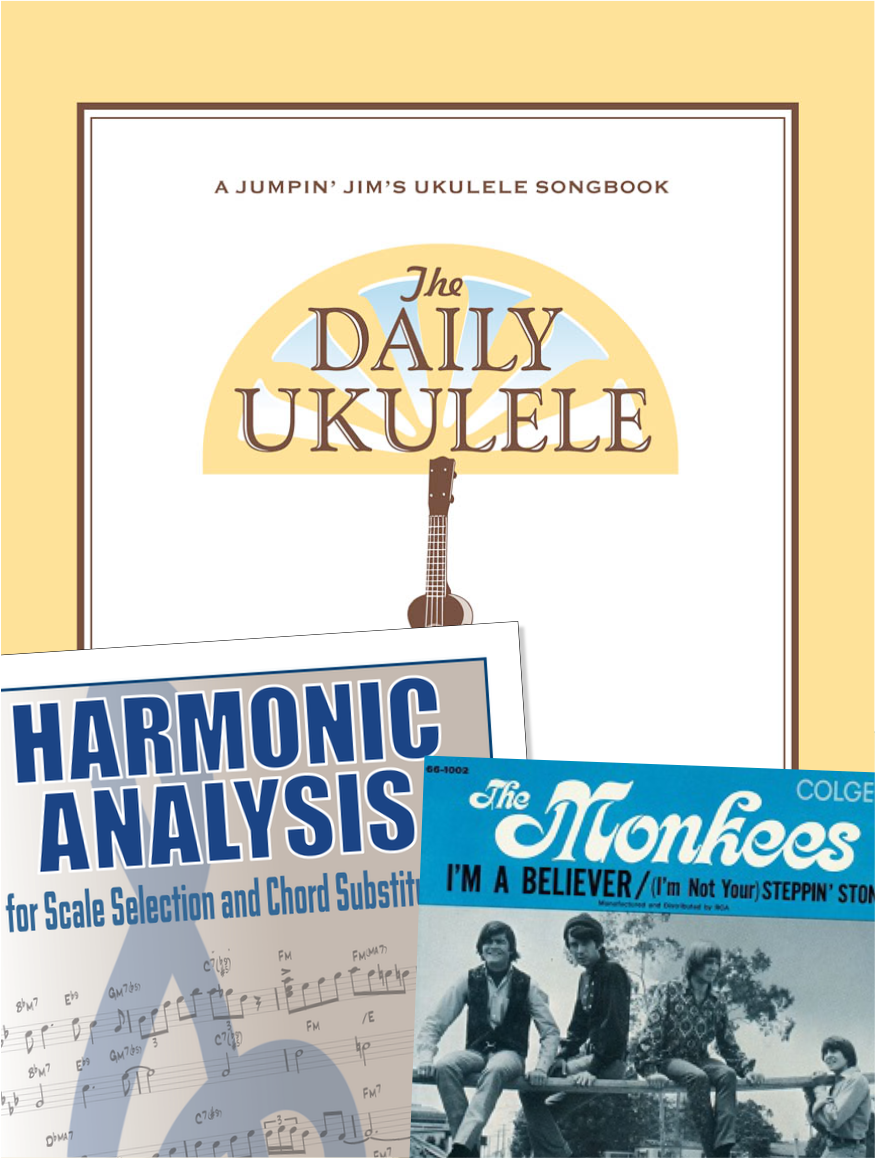


.jpg)